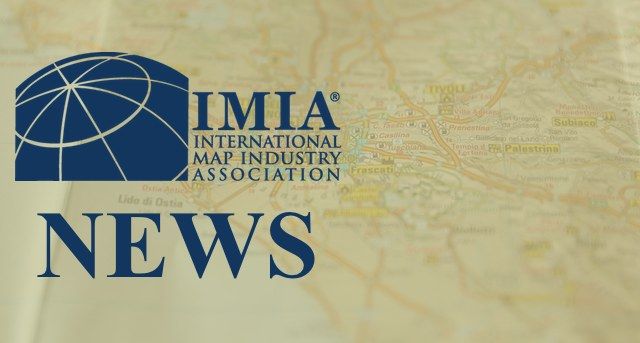What is a map? As I pondered – and indeed struggled – with this question, I considered the many different ways I’ve used maps in my personal and professional life. At first I came to the conclusion that the definition of a map depends on the user’s perspective; maps can be a way to navigate, discover information, or convey a message, among other things. The variety of mediums, from paper to computer code, used to display modern maps also led me away from a single definition. However, as I continued to try and draw commonalities between the types of maps and their various uses, one theme consistently emerged. At its core, a map is a way to spatially display and convey content.
As I embarked on my career as an Army officer, the type of map content important to me took a variety of forms. Navigation was an essential skill, so paper maps depicting transportation and topographic information had great importance. Of course, as we liked to say, the maps we were using were obsolete as soon as they were printed, because natural and human actions make the world a very dynamic place. I would also add my own content, such as friendly and enemy locations, supply points, and coordination measures, to existing maps. Usually I’d do this by putting a layer of acetate over a paper map and drawing on it. While this approach was useful, as soon as my added content changed, which it did constantly, I’d have to find the time to update it to keep my map current. This could be challenging, especially when I was already doing many other things – and I was likely in a moving vehicle, to boot.
Early in my military career, I was handed a piece of technology that would have a profound impact on maps and mapping: the GPS. The first GPS unit I had did little more than display a location and allow me to add a handful of checkpoints. However, even this limited capability proved eye-opening. Navigating Middle Eastern deserts, typically an onerous task when done by terrain association as every sand dune is seemingly the same, suddenly became very easy. I quickly became a true believer, and a few years later was an early adapter of a civilian GPS that included a transportation base map. My perception of maps quickly changed, as my GPS was able route me and provide scalable road detail that no single paper atlas couple hope to contain. Even though the content contained on the GPS was not dynamic – it required a costly update, akin to purchasing a new atlas every year – and was fairly limited, the possibilities were obvious.
Around the turn of the 21st century I decided to pursue an advanced education in geography. Aside from gaining a much deeper appreciation for the power of maps, I was introduced to geographic information systems (GIS). Now I could quickly make a map, but more importantly I could add or delete content of my choosing with the touch of a button. Thus I had a method to ensure that the map I was using was as up to date as possible, and at least it was less obsolete than the maps I was handed as a young officer. Moreover, I could easily tailor the content of my maps; I was not bound by what content some other mapmaker decided I should see.
Since my discovery of GIS, the conceptual basis for mapping has undergone a dramatic shift. The information age has allowed for dynamic, real (or near real) time mapping. For example, Google Maps utilizes crowdsourcing to essentially make corrections to its content database on the fly. The Waze application is revolutionary, providing traffic routing based on crowd sourced information, as well as proving real time content on hazards travelers can expect to encounter on their route, to include – much to their chagrin – the presence of police ahead. Google, Waze, and a host of other mapping applications are accessible via a variety of access points, including smartphones. Thus the most advanced version of the contemporary map displays up to date content of the user’s choosing in any location that can access the Internet.
In my current job, I am attempting to capture the concept of modern mapping for the US Intelligence Community (IC). As Director of the National Geospatial Intelligence Agency’s Content Management Office, I am working on a project to deliver a geospatially-dynamic and intuitive “Map of the World.” This effort brings together foundational geospatial intelligence data – think land, sea, air, and human geography – and intelligence observations from around the IC. In its mature form, the Map of the World environment will provide users access to the breadth of content the intelligence community possesses about a particular object or geographic location. Users can tailor the content exposed through the Map of the World to their needs, and most, if not all, of the map’s content will be dynamically updated – always current.
Static maps have existed for over 18,000 years, and for the vast majority of this time the content conveyed by maps was defined by the mapmaker. The last 25 years have seen a dramatic shift in mapping. By my definition, maps are a way to provide content. Now that content decisions are largely in the hands of the user, so is mapping itself.
COL Michael Senn, PhD, is the Director of the National Geospatial-Intelligence Agency’s Content Management Office.







